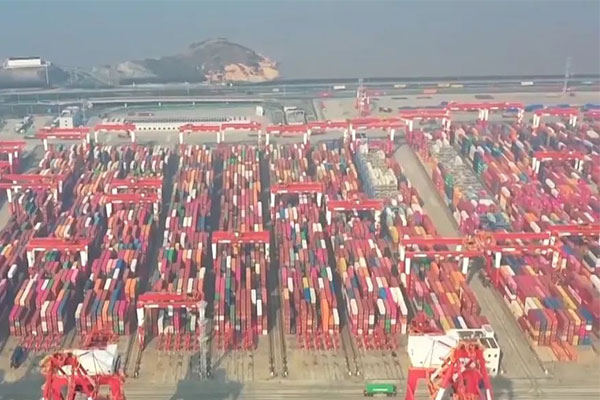
1. What basic qualifications are required for exporting fruit wine?
Core qualifications include:
- Production enterprises are required to possess:
- What are the differences in customs declaration for different zongzi packaging?
- Export foodCertificate of Production Enterprise
- HACCP or ISO 22000 certification (not mandatory but enhances competitiveness)
- Essential for Trade Agency Enterprises:
- Import and Export Rights
- Alcohol distribution license
- Foreign Trade Operator Registration Record
Based on our experience serving as agents for Japanese sake, the EU's new regulations set to take effect in 2025 will...Regulations on Alcohol Traceability LabelsIt is required that all fruit wine packaging must include QR code traceability information. It is recommended to confirm compliance requirements with the target market agent in advance.
II. Fruit WineExport customs clearanceWhat are special requirements?
In 2025, the General Administration of Customs implements regulations on the export of alcoholic beverages.Three-tier classification-based supervision:
- Basiccustoms clearanceMaterials:
- Commercial Invoice/Packing List/Contract
- Sanitary certificate (issued by CIQ)
- Proof of Origin
- Special documents:
- Alcohol Concentration Test Report (v/v value must be specified)
- Instructions for Additive Use (e.g., Sulfur Dioxide Content)
- Fumigation Certificate for Wooden Packaging (when using wooden cases)
Recently, while handling the export of a batch of bayberry wine to Germany, it was found that the product lacked proper labeling.Potassium metabisulfiteThe specific content leads to rejection, and it is recommended to pay special attention to the international naming conventions for food additives.
3. How to choose the target marketCustoms clearanceThe agent?
The three golden criteria for evaluating agents:
- Completeness of local alcohol import qualifications
- The United States requires a TTB license.
- The European Union requires a Class IV/VI liquor operation license.
- Customs clearance time guarantee capability
- Average 3 working days in the Southeast Asian market
- European and American markets: 5-7 business days
- Emergency Response Case Database
- In 2024, we assisted clients in handling the Canadian label discrepancy incident by leveraging pre-preparedEmergency Guarantee SchemeAvoid demurrage losses.
IV. How significant are the tariff differences for fruit wines across different countries?
Overview of Tariffs in Major Markets for 2025:
- ASEAN countries: 0-5% (under the China-ASEAN Free Trade Agreement)
- United States: General tariff 14.9% + bottle tax $0.21/750ml
- EU: 8.6% base tariff + consumption tax (varies by country)
- Japan: 15% tariff + specific duty (calculated based on alcohol content)
It is recommended to prioritize development.the markets of RCEP member statesFor example, exporting fruit wine to South Korea can enjoy a preferential tax rate of 6.5%, which is 3 percentage points lower than the most-favored-nation rate.
V. How can the transportation plan balance cost and quality?
Selection based on cargo value and transportation distance:
- Ocean shipping solution:
- Full container load (FCL) shipping: Suitable for bulk shipments exceeding 1000 cartons.
- Constant temperature container: maintains 15-18°C (cost increases by 30%).
- Air freight solution:
- Preferably choose those withTemperature-controlled cabinthe flight
- It is recommended to purchase transportation insurance (the premium is approximately 0.3% of the cargo value).
The measured data shows that by adoptingNitrogen-filled packaging + air cushion columnIt can reduce the transportation breakage rate from 8% to 0.5%, making it particularly suitable for the transportation of premium fruit wines.
6. How to prevent international payment risks?
It is recommended to adopt a tiered payment guarantee mechanism:
- First order transaction:
- 30% advance payment + 70% payment upon receipt of bill of lading copy
- Mature Cooperation:
- 60-day usance letter of credit (export credit insurance required)
- Risk Warning:
- Regularly inquire about the buyer.Customs Credit Rating
- Apply for Sinosure short-term insurance (premium rate 0.5-1.2%).
7. What are the effective channels for overseas market promotion?
Online and offline integration strategy:
- Establish strategic cooperation with local wine importers.
- Participate in professional wine exhibitions such as ProWine and Vinexpo.
- Enter specialty food sections (e.g., Whole Foods in the U.S.)
- Offline channels:
- Amazon Wine Store (requires approval for special category permissions)
- TikTok Shop Food Category Live Streaming (Note the live streaming regulations in various countries)
The lychee wine we represent has passedInstagram influencer reviews + offline product tasting eventIntegrated marketing, achieving 200% growth in the U.S. market within 3 months.
VIII.Export tax refundHow to maximize returns?
Key Points for Fruit Wine Tax Refund in 2025:
- Tax refund rate: 13% (HS Code 22060090)
- Declaration Process:
- All foreign exchange must be collected within 90 days after export.
- VAT invoice must be declared within 180 days after certification.
- Optimization Suggestions:
- adoptedSelf-operated export + customs clearance agencyMode
- Establish a pre-review mechanism for export tax refund documentation.
A blueberry wine export enterprise has achieved...Electronic Document Management System, reducing the tax refund cycle from 45 days to 18 days, thereby improving capital turnover efficiency by 60%.


 Follow the customer service WeChat account.
Follow the customer service WeChat account.